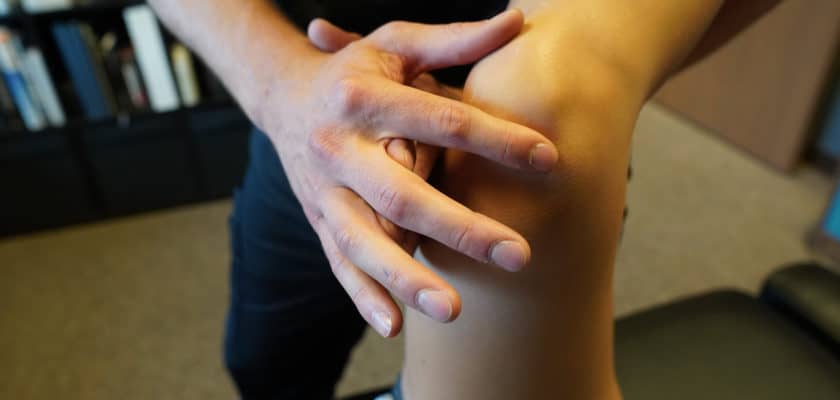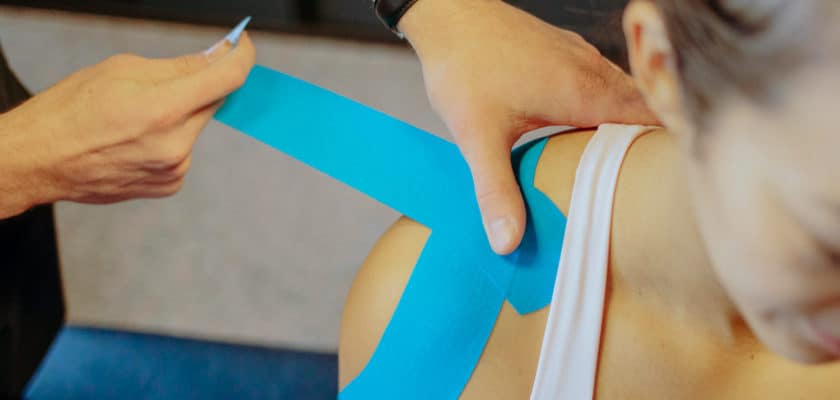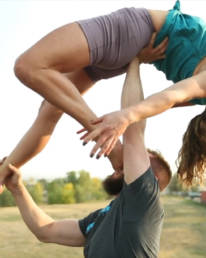There are many positive health benefits that come from playing sports. Obviously, physical activity is good for the body and mind, but it offers many more benefits. For example, it can lower your risk of diabetes, heart disease, and stroke. It also strengthens muscles and improves your body’s ability to store oxygen in the blood and lungs.
Unfortunately, there is a downside when it comes to too much exercise. If you play sports often, you will know the aches and pains that come with it. Sometimes too much playing can cause wear and tear on your body. Ninety percent of athletes reported some form of sports-related injuries and 54 percent of students reported they have injured themselves while playing sports.
Sports could end up sidelining you if you’re not careful. While there is no way to prevent yourself from getting hurt, you can reduce your risk. Injuries caused by overusing or straining the muscles can be prevented by pre-and post-stretches. Also, take rest days and listen to your body. Here are some of the most common sports injuries, and some of the steps you can take to prevent them from happening in the first place.

What are the 5 most common sports injuries?
1. Knee Injuries
About half of sports injuries occur in the knee. One common injury is called jumper’s knee, which is also known as patellar tendinitis. Jumper’s knee occurs when the tissue that connects the bottom of the kneecap to the thigh muscle becomes inflamed or injured. The risk is greater when doing sports that require a lot of jumping, such as basketball or volleyball.
People who often play on a hard surface are more likely to have knee injuries. Symptoms include pain, stiffness, or weakness in the knee area. This especially happens whenever you climb stairs, kneel, or jump. These injuries can range from acute to chronic.
Runner’s knee is another common injury that’s caused by repetitive motion. It’s common among bicyclists, runners, and walkers. Sometimes it’s also caused by adding trauma to the knee or hitting it on a hard surface. Symptoms include pain, swelling, and a grinding sensation. These injuries range from acute to chronic.
2. Strains and Sprains
Strains and sprains are two similar, often mixed-up injuries:
- Sprain — injures the bands of tissue that connect two bones together.
- Strain — involves an injury to a muscle or to the band of tissue that attaches a muscle to a bone.
Symptoms of sprains include bruising, pain, and swelling. Symptoms of strains are caused by sharp pain and a limited range of motion. It may also cause bruising and swelling. Sprains are typically acute, while strains range from acute to chronic.

3. Achilles Tendon Injuries
The Achilles tendon is the largest tendon in the body. It consists of a long band of fibrous tissue that stretches from the heel to the calf muscles. This is the muscle that allows you to walk. Achilles tendinitis is a common occurrence among runners.
It happens when you don’t properly stretch the muscles before a game. It can also happen when you don’t wear the right running shoes or you play sports more often. Symptoms include pain when you walk or run, swelling in the area, or the area is warm. These injuries can range from acute to chronic.
4. Broken Bones
Broken bones are very a common sports-related accident. This is caused by trauma, which causes a sudden force that weakens the bone. It can also be caused by overuse or repetitive motion. Symptoms include numbness, pain, swelling, and tenderness around the area. You may also notice that the injured area doesn’t look right and hurts when you move it. These injuries are acute.
5. Rotator Cuff Injuries
The rotator cuff is located inside the shoulder. This allows your shoulder to move around and keeps it still during activities. Rotator cuff injuries occur during repetitive motions in sports such as baseball, swimming, and tennis. Symptoms include pain when raising your arm, pain when reaching behind your back, and swelling in the shoulder area. These injuries are chronic.

How to Prevent Common Sports Injuries
Talk to Your Doctor
Book an appointment for a preseason physical. This should take place before going back to school or playing an entire season. A sports physical helps you be more aware of any areas of concern before starting an activity. This also prevents you from further injuring yourself. Your doctor will determine if there is a health concern that needs to be addressed and treated.
Focus on Warming Up
As previously mentioned, proper stretching is important for prevention. It should become a habit for all athletes to practice. It’s suggested to do both dynamic and static stretching during warmups. This loosens up the muscles and prepares them for the game ahead.
Static stretches happen when you hold a position for a certain amount of time, while dynamic stretches are when the body moves during stretching. Jumping jacks and toe stretches would be two examples of static and dynamic stretches you can incorporate into your stretching routine.
Get Plenty of Rest
All athletes should rest in between games, practices, and tournaments. You should also get plenty of sleep at night. A lack of sleep can lead to muscle fatigue, which causes even more injuries. The most common injuries are overuse injuries – playing too hard and not sleeping enough. You should also plan for an off-season, which gives you plenty of time to rest before the following season.
Eat a Healthy Diet
Exercise is important, but it’s not the only thing that builds a healthy body. A healthy, well-balanced diet filled with fruits, lean proteins, and vegetables is also important. Rather than following a diet, you should have a regular eating schedule. Make sure to eat breakfast, lunch, and dinner at the same time each day.
Drink Plenty of Water
Muscle fatigue and injuries are caused by a lack of hydration. Make sure to drink plenty of water before, during, and after each game. Be aware of common health-related illnesses, such as confusion, fainting, fatigue, nausea, or vomiting.
Conclusion
See your doctor right away if your injury causes bruising, deformities, or swelling. You should also go to the doctor if the pain or swelling persists after a few days. Your doctor will give you medication or a device to help with the injury.
If you want added prevention and support, our team will help you create a plan based on your goals. Our sports chiropractic services offer a combination of cutting-edge diagnostic and treatment techniques that help you stay on top of your game. Stay on top of your health and book a consultation with Dr. Dorsa. You can enjoy the sports and activities you love without the pain.

Welcome to Dorsa Chiropractic. We started this practice to help people like you feel great!
When you visit us here at Dorsa Chiropractic, we’ll go over your injury, pain points, or general wellness goals. Our doctors will conduct an assessment to verify the root of your physical symptoms to come up with a plan for bringing your body back to health.

